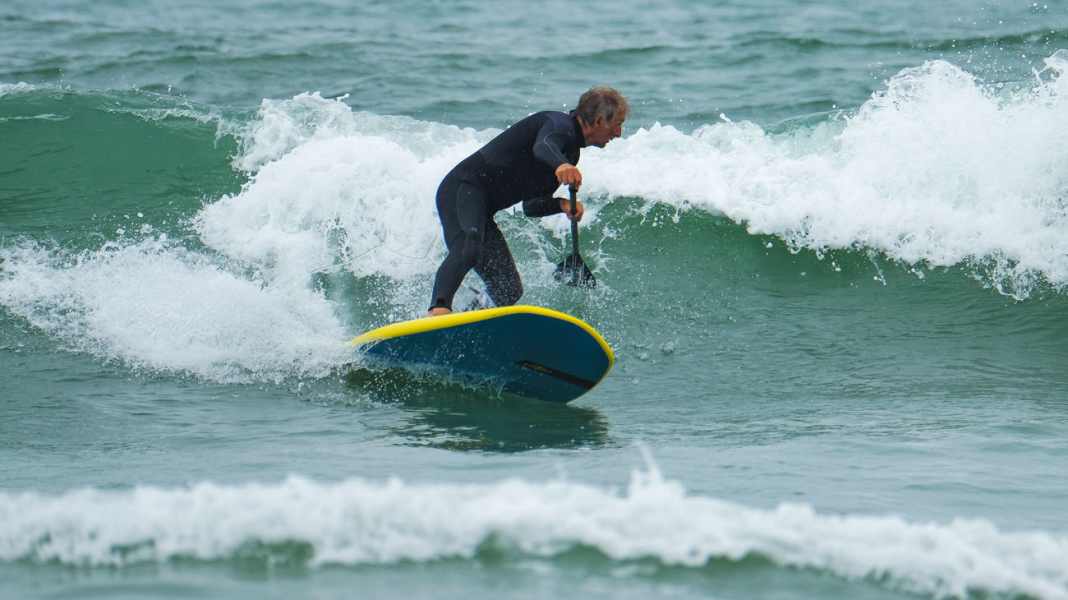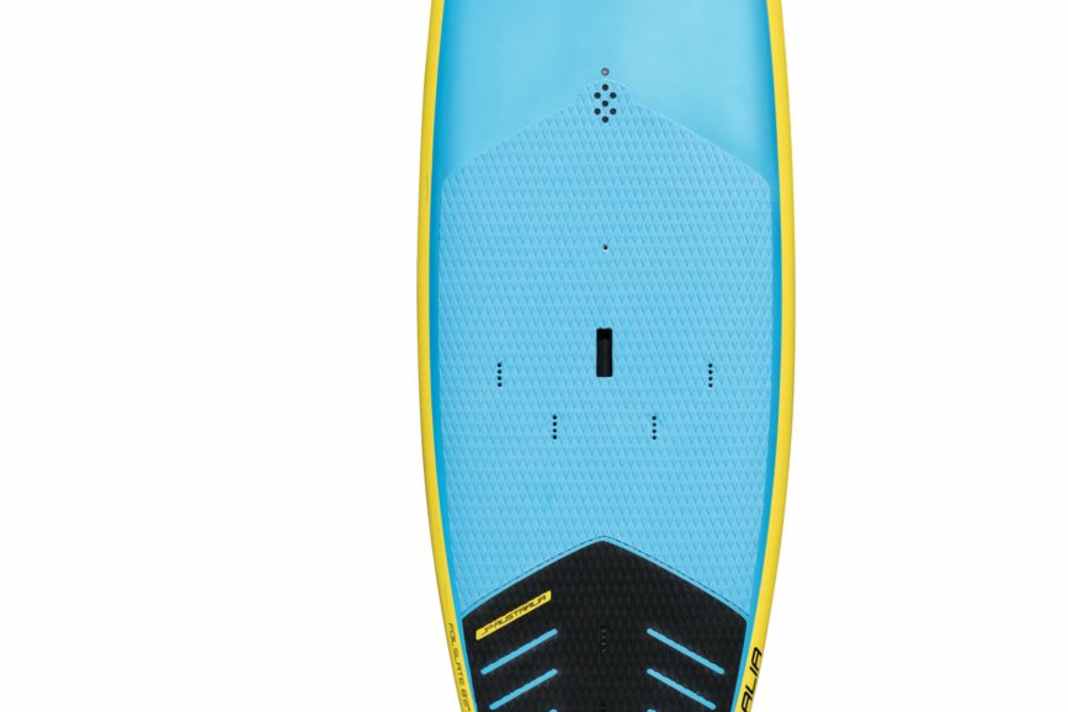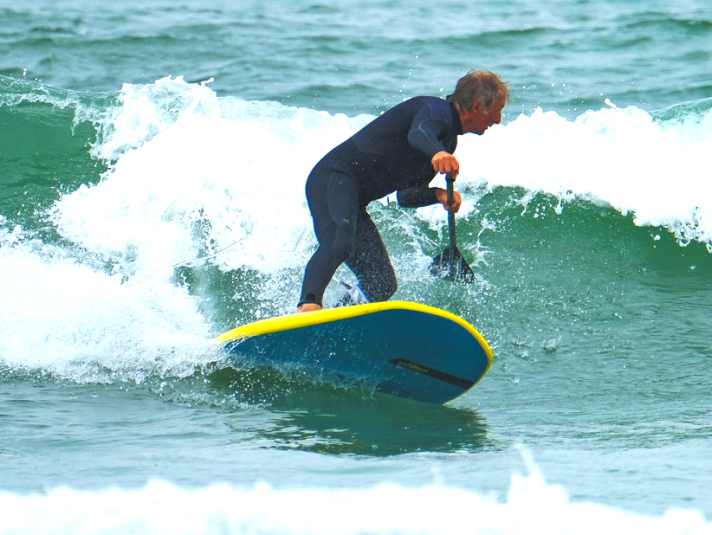
The JP Foil Slate on land:
The Crossoverboard JP Foil Slate The originates from SUP surfing and has been upgraded with loop plugs and a double rail for windsurfing and foiling. With a weight of 9.3 kilos, it is within the normal range for such boards. If you apply wingfoil standards, the length of 248 centimetres is of course very generous, the dimensions are mainly the result of the requirement to have a good wave SUP that can be paddled on easily - a corresponding length is necessary for this. The comparatively thin edges and the volume distribution with a slim tail also differ fundamentally from pure foil boards. Straps can only be fitted to the Foil Slate for windsurfing foiling; a moderate freeride position is offered here, which is also easily accessible for foil novices. No straps are provided for wingsurfing - you surf strapless here.




Trinity? The JP Foil Slate on the water
We tested the JP crossover board with the Starboard Waterman-Package Foil. Due to its length, the board also reaches a good take-off speed with a passive riding style. However, all this without strap contact, as these are simply not intended for wingfoiling. If you want to learn how to wingfoil, this board with its ample volume and high stability is very easy and relaxed. As expected, the board feels less compact in the air than pure wingboards, but it is still possible to fly round in a relaxed manner without the board developing too much of a disturbing life of its own. However, foiled gybes become more challenging without straps, as there is no direct contact with the board.
Second test: Foil back, straps fitted - the JP crossover board mutates into an enjoyable windsurfing foil board. Also with the Starboard Supercruiser Foil, the strap positions matched the 5.3 sail used perfectly, and it also harmonised well with a somewhat sportier Indiana windsurfing foil. The board is then easy to edge, agile and light-footed, despite its length, which is actually quite generous for a foil board. Turns are no problem at all and with the clear upturn at the front, "crashes" when foiling are also quite harmless.

SUP surfing remains the Slate's favourite discipline. Equipped with three small fins, the flat shape accelerates very well even on smaller waves. When paddling out, the board is stable in the water, just as it is when turning against the wave before paddling in. It can be guided into the turn with little pressure, real bottom turns and cut backs are easy to do with the Foil Slate - provided you have the right waves and the right riding skills.
Conclusion:
The JP Foil Slate crossover board is a top wave SUP for ambitious paddlers and a suitable cruiser for windsurf foiling with moderate freeride foils. For wingsurfing, however, the crossover board is more suitable for trying out and especially in combination with cruiser foils that are less trimmed for speed. Loops would be helpful for foiled manoeuvres, but the dimensions are too bulky for jumps and tricks anyway.
Easy for wingfoil beginners; can be used for 3 disciplines
Dimensions too bulky for ambitious wingfoiling
Wingfoiling only without loops
You can find more tests of crossoverboards for waving, windsurf foiling and SUPing here HERE
